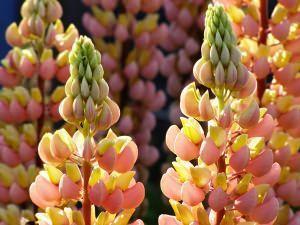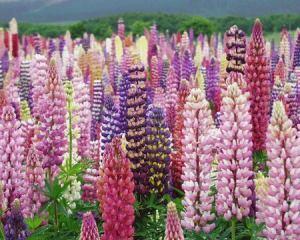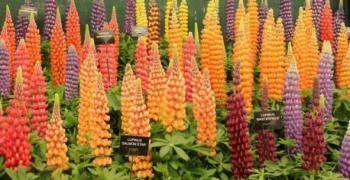Lupine cultivation
Post from EditorialsThe lupine plant has a very scenic vertical development that can be easily used for borders of the bottom even in areas in shade or in acid soils.
 Flowers are always spectacular. The lupine is among the latter.
Flowers are always spectacular. The lupine is among the latter.
It is a perennial legume very old, already widespread in the Mediterranean basin and in parts of the Middle East, that we can be easily found on the coasts of the South, such as Campania, Apulia and Calabria, and has no difficulty taking root, as who prefers soils not too rich and too unfavorable environments.
To this is also an excellent plant for those areas of the garden that we are not always able to make aesthetically beautiful and appreciable.
Even more so if you think that the lupine is a leguminous plant, which is very rich in protein and improves the fertility of the soil in which it is planted.
But beware the seeds: the lupine is often consumed by animals or even humans. To be used, these must be subjected to washing processes accurate, so that they are eliminated toxic substances, such as alkaloids.
Cultivation of lupine
The lupine, also known by its Latin name Lupinus, is usually grown in parts of Europe with three particular species, which are distinguished by the color of the flower: blue, yellow, pink or white.
In the Italian regions the most common is the white lupine, which in addition to being beautiful and equipped with iridescent blooms, is also the most durable, it can be also a rather wet and cool climates. The lupine is an annual plant type. In general, the various species have different heights that line about a meter - meter and a half. The stem is branched but little long and wears a flower panicle, large and showy, which is actually composed of racemes gathered on the end of the branches of the plant.
The lupine is an annual plant type. In general, the various species have different heights that line about a meter - meter and a half. The stem is branched but little long and wears a flower panicle, large and showy, which is actually composed of racemes gathered on the end of the branches of the plant.
The colors are beautiful and very varied, so much so that in some types of lupine even appear iridescent.
The seeds are contained in pods in groups of three or six and are also often used for human or animal consumption. But beware: it is better to make sure that they have been treated with appropriate washing, to reduce the alkaloid content, poisonous and harmful to humans.
Regarding the soil, the lupine prefers soils acid type, preferably of volcanic type as those of the zones of the Centre Italy, failing instead often in calcareous soils. The limestone fact is poorly tolerated and especially in some species determines the death or even the non - birth of the plant. This happens, for example, with the Lupinus luteus, while the Lupinus albus is more tolerant.
All species instead, they fear the possible stagnant water from watering, but also the sudden frosts, which are supported almost without problems instead, from Lupinus albus, which can even be sown in the late autumn.
Sowing and combinations of lupine
The sowing of lupine can be carried out with the arrival of the month of October until the end of November. Better to choose seeds newer, or seeds that have been modified defined cakes, as has been reduced by the amount of alkaloids contained within. The distance of the seeds should not be excessive, since the development is mostly vertical. The lupine can be used for mixed flower beds, borders and backgrounds for even in areas not too sunny, even if he prefers not bright locations with excessive exposure to sunlight. A position in partial shade or full shade may compromise flowering.
The distance of the seeds should not be excessive, since the development is mostly vertical. The lupine can be used for mixed flower beds, borders and backgrounds for even in areas not too sunny, even if he prefers not bright locations with excessive exposure to sunlight. A position in partial shade or full shade may compromise flowering.
The lupine does not fear cold weather and the sudden frosts, especially if it is protected and mulched with dry leaves or straw. In the case of the aerial part is damaged, do not worry. Will be eliminated over time, leaving room for new growth, with the arrival of spring.
Lupin the watering must be regular and abundant throughout the summer, ie from March until October.
The lupine can also be used in combination with other plants. For example, it can be placed in the bottom of flower beds or borders of large, along with species such as the Macleya Cordat, Salvia uliginosa or even a Molinia caerulea, or a grass looking very light and pleasant.
80338 REGISTERED USERS










